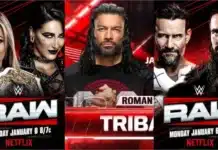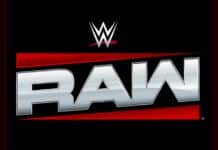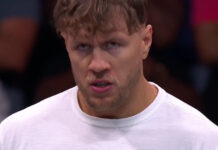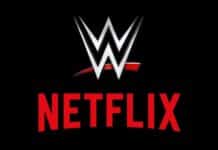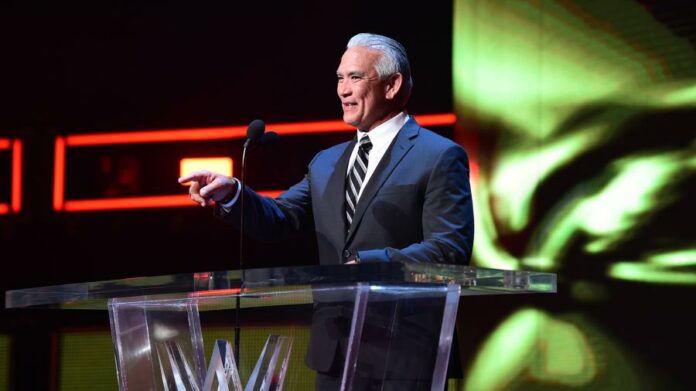
After writing about Wrestle War 1991 last week, the 1992 edition will be the topic for the VHS Memoirs this week, simply because it was the next show in the queue on the Peacock app, and after watching the pay-per-view, that is almost the only reason anyone should watch this debacle of a broadcast. Similar to what I’ve written recently about most of this era of WCW, the management changes weren’t common knowledge at the time, but you can definitely tell that the product was all over the place with a general lack of direction, especially with nine matches on the card. Considering that the War Games main event must be given a certain amount of time based on the intervals of the match, you’d think the office would avoid trying to shoehorn extra contests onto the pay-per-view. However, the attempt to try to get as many names as possible onto the show led to a series of underwhelming bouts because of the lack of quality or that they weren’t given enough time to develop into anything other than a typical TV match.
The Freebirds successfully defended the US Tag Team titles against the combination of Terry Taylor and Greg Valentine. I have to be honest, I originally didn’t recall Valentine even being on the roster during this period, and the duo with Taylor seems like a case of throwing two random wrestlers together that management didn’t know what to do with more than anything else. The match itself was fine, nothing terrible, but nothing great either. It went almost 15 minutes and dragged at certain points so they probably could’ve had a better match if they took it home about five minutes earlier. A side note from this contest, despite the pay-per-view payoff, “The Hammer” looked about as thrilled as you’d expect him to be while he waited on the apron for the tag.
Johnny B. Badd beat Tracy Smothers in a basic match that was designed to showcase Marc Mero, which was the right decision, as he had his debut in the organization earlier that year. Tracy was always a solid pro and made his opponent look good during the bout, but this is a scenario where the match wasn’t given the time to be anything more than an average WCW Saturday Night match. Granted, pay-per-views sometimes had preliminary contests around this time frame, but when you take into account the rest of the show, the majority of the card just didn’t seem like PPV quality. It should be mentioned that while Mero was later overshadowed by Sable and booked to look like a fool in the WWF years later, he displayed a lot of athleticism, as well as a level of charisma with the Johnny B. Badd gimmick.
Scotty Flamingo, the grappler that went on to become Raven in ECW, got the victory over Marcus Bagwell, who went on to be fired from the WWF after that awful match on Raw in 2001. This match is okay, but really nothing worth going out of your way to watch. The most noticeable aspect is that it’s somewhat odd to see Raven as Scotty Flamingo since he’s so well-known for the grudge look.
Ron Simmons pinned Mr. Hughes in a match that went less than five minutes and is completely skippable. Ron Simmons was a main event level talent and a tremendous performer during his twenty-year career so you can draw your own conclusion as to why you should fast forward this segment.
The Super Invader, a short-lived gimmick portrayed by Hercules Hernandez, was a character that I completely forget existed in WCW. Although, considering this match against Todd Champion, I wish I wasn’t reminded of its existence. Whoever gave Todd Champion his name definitely had a sense of humor and prehaps it was supposed to be some type of irony. This bout is just terrible and probably the worst on the entire broadcast. It’s clunky and there were some botches. Super Invader got the victory, but there were no winners in the match. It went roughly five minutes and that was still too long for such a subpar contest.
Continuing the trend of lackluster five minute matches, Big Josh, complete with boots and a very short pair of shorts, beat Richard Morton, the Rock N’ Roll Express member’s brief heel run. Aside from Big Josh looking rather grimy, it’s always odd to see Ricky Morton as a heel because it’s just not what you expect after his legendary fire as a baby face. Big Josh got the win, but I would advise that you just avoid this match, and consider it a public service that I reviewed this match so you don’t have to view it.
After three awful matches in a row and two typical TV matches, the process to rewatch this event was tedious to say the least. Thankfully, the athleticism of Flyin’ Brain helped pace up the pace of this card, and while you won’t find many stellar Tom Zenk bouts, this was probably the best match he was capable of, even if most of it was because he was working with Pillman. The future loose cannon retain the short-lived WCW Light heavyweight belt, a championship that was somewhat of a predecessor to the cruiser weight title, as the majority of its existence was based on early Pillman-Liger matches, which were undoubtedly the reason the same contest opened Nitro a few years later. Pillman retained the Light Heavyweight belt and his fast paced work in this match are one of the few highights of the show.
The Steiner Brothers beat Tatsumi Fujinami and Takayuki Iizuka in a match to determine the number one contenders for the IWGP tag team titles during the initial WCW working agreement with New Japan. I’m not sure if there was miscommunication in this contest or some type of disagreement, but this was a very stiff match and the two teams didn’t seem to corporate during it. Iizuka gets a nasty cut near his eye and is bleeding for most of the match. From what I could tell, when Rick goes for an elevated elbow from the top rope while Scott holds Iizuka up, it looks like Rick’s knee lands on his face when they hit the canvas. Again, I’m not sure if the match was just stiff based on the Japanese style of if there was legitimate hostility, but these bout definitely looked realistic and it was an entertaining contest.
Next was the main event and in many ways, it saved the show because this was an absolute classic that you should go out of your way to watch, even if you skip the majority of the pay-per-view. Sting, Ricky Steamboat, Dustin Rhodes, Barry Windham, and Nikita Koloff challenged The Dangerous Alliance of Steve Austin, Arn Anderson, Rick Rude, Bobby Eaton, and Larry Zbyszko. As much as the 1991 version of this war games match was about the baby faces flying around the ring, the 1992 edition focuses on the violence of the bout. Stunning Steve is a bloody mess for the majority of the match and almost every competitor ends up with the “crimson mask” before the final bell. Steamboat’s selling, as it always is, is really top notch here and tells the story of the contest well as the momentum tilts depending on if the heels have the advantage at each interval. The bout is wild as there was blood on the canvas, the turnbuckles, and the cage. At one point, Medusa scales the cage and drops Paul E’s signature phone through the top, but is confronted by Sting so she quickly climbs back down to the floor while Dangerously frantically tries to make sure she gets back to the floor. Eventually, the turnbuckle gets unhinged from the post and Zbyszko attempts to hit Sting, but accidentally smashes Eaton in the arm. Sting uses an arm bar to get the submission and the victory.
What do you think? Comment below with your thoughts, opinions, feedback and anything else that was raised.
Until next week
-Jim LaMotta
E mail [email protected] | You can follow me on Twitter @jimlamotta

